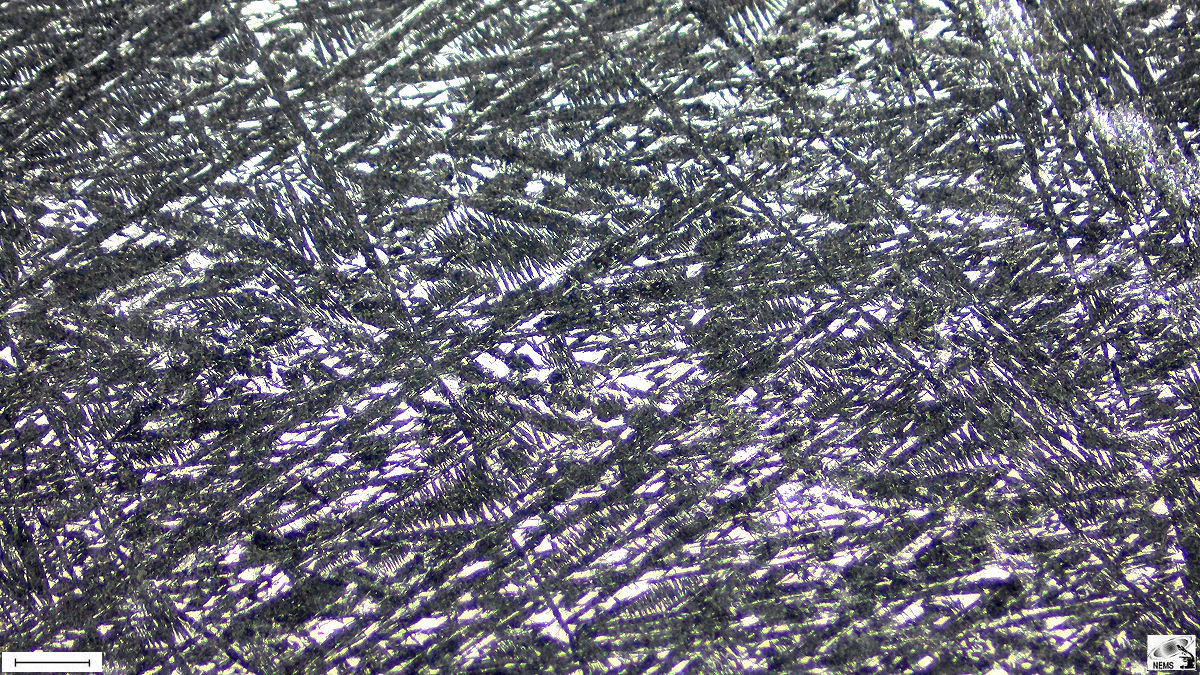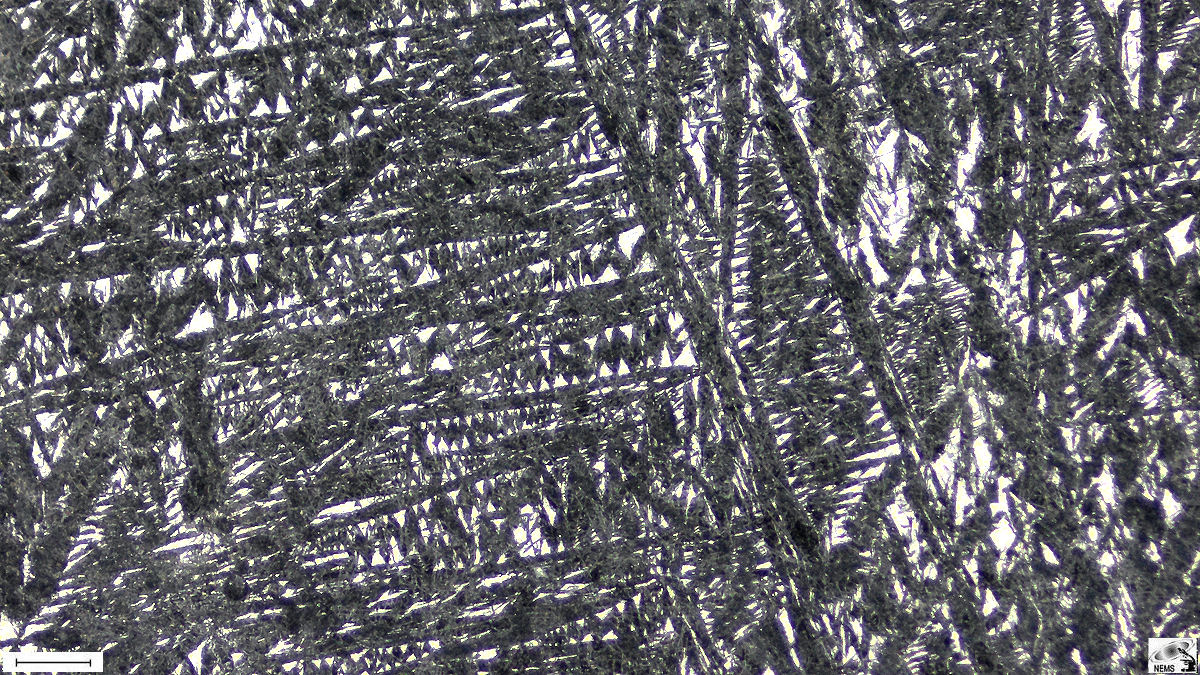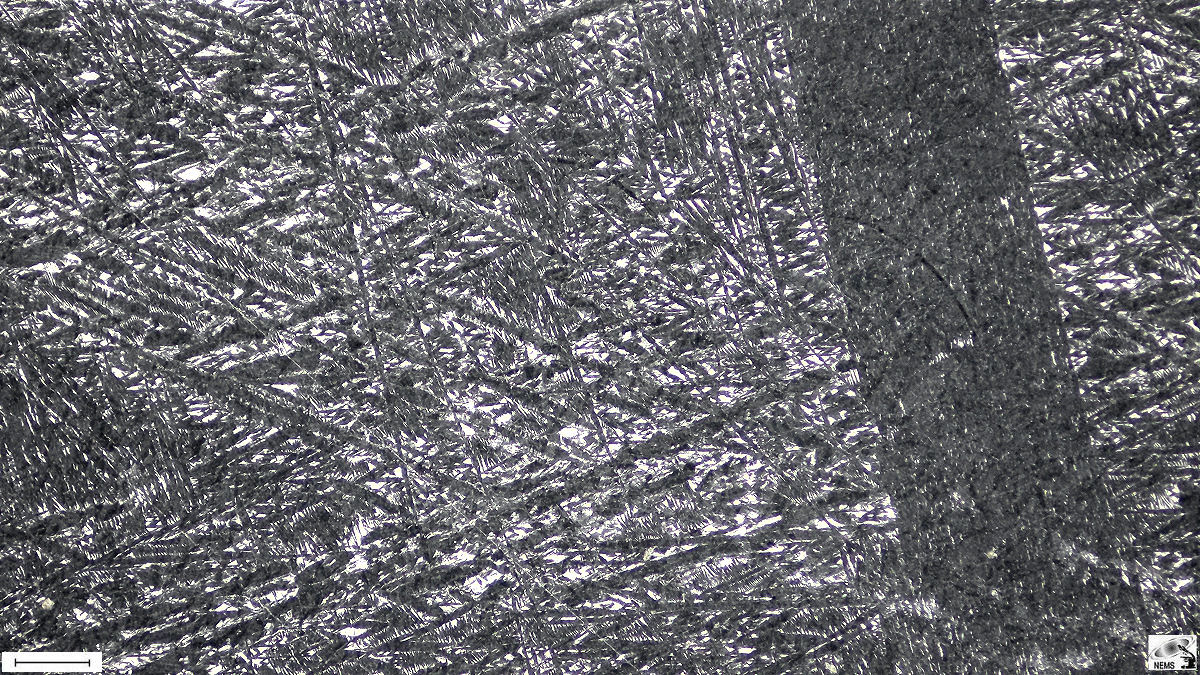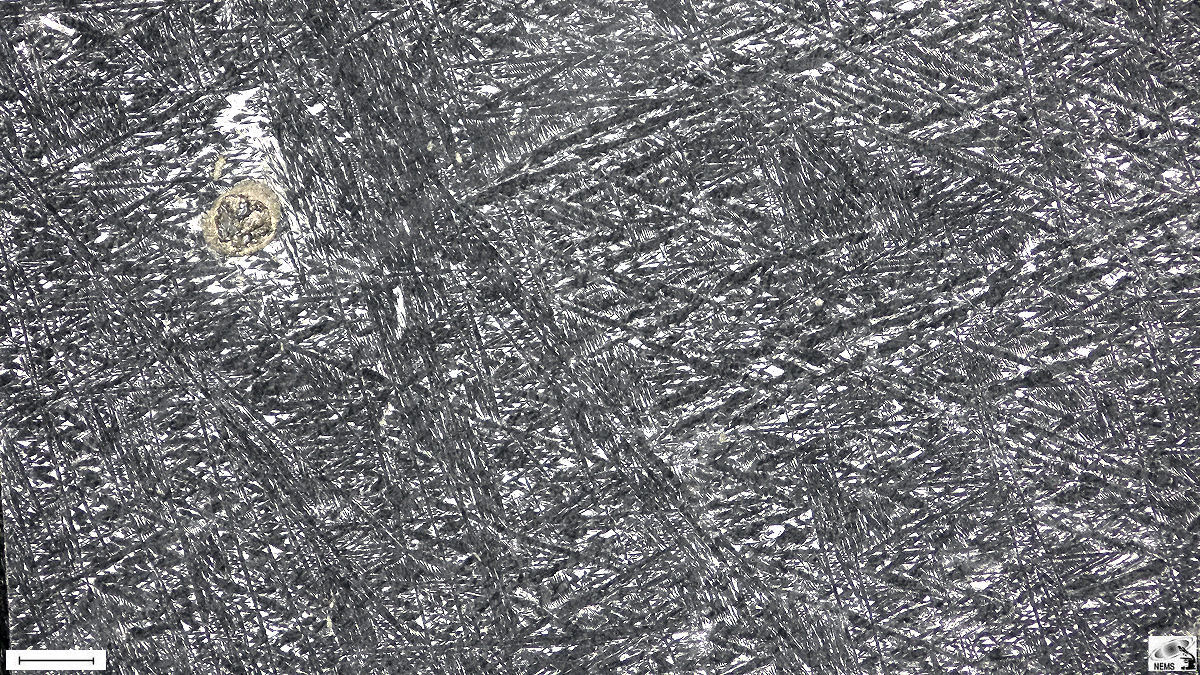Primary and
Secondary Structures - Meteorites |
| Return to Contents. |
| Back...Next. |
Martensitic structure |
 |
| Figure 1. Scale bar 300 µm. |
| Meteorite - Tishomingo |
| Multiple groups of martensite (black) in retained taenite (white). |
| Martensitic structure - Secondary. |
In the field of meteoritics, martensite, a metallic Fe-Ni alloy containing 8-15% nickel, is commonly linked to a shock-heating event. This phase emerges through the rapid cooling, or quenching, of taenite, a process that traps carbon atoms within the crystal lattice due to insufficient time for diffusion. This rapid transformation is central to understanding martensite's distinct properties. Known as the martensitic transformation, this diffusionless process unfolds through a sequence of temperature drops, forming new plates and structures without relying on atomic diffusion. As a result, early-formed martensitic plates do not enlarge over time, locking in their initial configuration. Martensite is notably hard, with a Vickers Hardness ranging from 600 to 700, which also makes it brittle. When etched with acid, it reveals an irregular pattern of dark brown or black thin plates superimposed on the parent taenite. The Tishomingo meteorite serves as a prime example of this martensitic structure. In Buchwald's 1975 Handbook of Iron Meteorites, Tishomingo is described as "a unique meteorite, unmatched in its characteristics and composition." With an extraordinary 32.5% nickel by weight, it ranks among the most nickel-rich iron meteorites known. Structurally, it stands apart, consisting of 20% residual taenite and 80% coarse martensite plates. The meteorite used for this example of martensite is Tisomingo. |
 |
| Figure 2. Scale bar 150 µm. |
| Etched sections of Tishomingo display a coarse martensitic structure. |
 |
| Figure 3. Scale bar 800 µm. |
| Tishomingo. Austenite twin crossing the entire section. |
 |
| Figure 4. Scale bar 800 µm. |
| Tishomingo. Shock-melted troilite nodule, upper left. Scale bar 800 µm. |
| Tishomingo lacks graphite, carbides, phosphides, or silicates. Instead, it features metal-sulfide intergrowths characterized by irregular troilite grains. These grains have cores made up of taenite and troilite, while their rims contain daubréelite, as reported by Ruben in Meteorite Mineralogy (2021). |
| Return to Contents |
| ... |